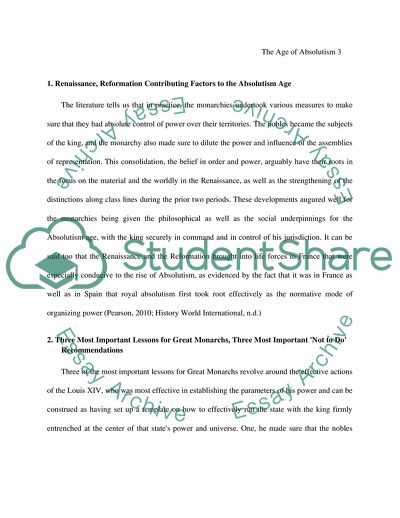Cite this document
(The Age of Absolutism - Expository Pragraphs Assignment Example | Topics and Well Written Essays - 2500 words, n.d.)
The Age of Absolutism - Expository Pragraphs Assignment Example | Topics and Well Written Essays - 2500 words. https://studentshare.org/history/1808729-the-age-of-absolutism-expository-pragraphs
The Age of Absolutism - Expository Pragraphs Assignment Example | Topics and Well Written Essays - 2500 words. https://studentshare.org/history/1808729-the-age-of-absolutism-expository-pragraphs
(The Age of Absolutism - Expository Pragraphs Assignment Example | Topics and Well Written Essays - 2500 Words)
The Age of Absolutism - Expository Pragraphs Assignment Example | Topics and Well Written Essays - 2500 Words. https://studentshare.org/history/1808729-the-age-of-absolutism-expository-pragraphs.
The Age of Absolutism - Expository Pragraphs Assignment Example | Topics and Well Written Essays - 2500 Words. https://studentshare.org/history/1808729-the-age-of-absolutism-expository-pragraphs.
“The Age of Absolutism - Expository Pragraphs Assignment Example | Topics and Well Written Essays - 2500 Words”. https://studentshare.org/history/1808729-the-age-of-absolutism-expository-pragraphs.


